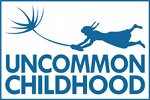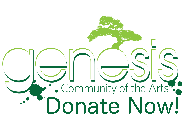A visit to ODA Cambodia: Who says one person can’t change the world?
August 15, 2012 in Asia, Cambodia, Travelogue
You can’t imagine the dust:
Iron red, powder fine, packed as hard as concrete and yet somehow continually kicked up into clouds as the children shouted and ran, chasing the ball back and forth, laughing. Just three days ago, when we’d disembarked in Siem Reap the hard packed mud had squelched up over our shoes in a thick toothpaste ooze as the rains made soup of the dust. Cambodia is a land of extremes, even in its earth, it seems.
It’s impossible not to laugh watching tree like American kids blown by winds to the rice paddies, towering over and around and through compact Cambodian kids all wrestling and tousling together in pursuit of a ball. “It’s the universal language of children,” I smiled to Shirley, “Dirt and a ball.” Hannah was continually urging the reluctant girls to join in the “boys’ game,” while Gabe and Elisha actively worked not to cream kids half their size in the fight for the ball. “Hey Mom, how do you say, “pass!” in Khmer?!” I have no idea… but the English teacher understood him and hollered the word he needed back in Khmer. My kids repeated it, call and response with him, three times and the word was theirs. It’s the same way he’s teaching English. The Cambodian kids cheered their attempt and the game was back on.
If there’s one thing we’ve learned traveling, it’s never to reject an invitation if at all possible. When Shirley came knocking on our hotel room door, having met our boys at the pool, to invite us to accompany her to a few rural English schools, we extended our stay by a day and made a point of it. “The children in the villages get to see very few Westerners,” she explained, “And I don’t know if they’ve ever seen Western children, so it would be great for them if you’d be willing to come and let the kids play with them for an afternoon.”
This is how serendipities come about. Fated interactions, divine appointments, universal encounters, coincidences, call them what you wish.
First, let me tell you a story:
During the reign of terror, presided over by the Khmer Rouge, there was a little boy named Leng who lost everything: his entire family perished. When the Vietnamese finally routed Pol Pot and the boys, freeing most of Cambodia, Leung followed the river to Phnom Penh and, against all odds, found his uncle, who had also survived the horrors. His uncle raised him. Life went on. He got married. He became an artist. One day Leng encountered five boys on the street: hungry, homeless and without hope of a future. Realizing that, but for his uncle’s kindness, this would have been his own fate as a child, he took in the five boys, taught them to paint, fed them, raised them as his own and provided an education for them.
When we walked into Leng’s home, on the fringe of Siem Reap, near the Angkor temples, we were greeted by 32 children, from tiny little ones, to the nearly adult, all sitting on the low Khmer style tables, painting and laughing. All of these children are well fed, well educated, phenomenal watercolour painters, and had smiles on their faces. Our children joined them in painting and drawing. Shy greetings were exchanged. Art bridged the gap. Leng’s wife, Sry, swung in a hammock with her small baby and beamed as Shirley introduced me to the “wonderful mother of 32 children.”
Their house is right on the main road; if you’ve been to the temples you’ve passed by it. Inside the courtyard is a metal roofed open air “porch” that is the center of family life. It is living room, classroom, art studio, soccer pitch, bicycle parking and the office for their organization. On the right is the girls’ bedroom. In the middle is Leung and his wife’s. On the left is the boys’ bedroom.
“The girls’ bedroom had horrible leaks in the roof for a long time,” Shirley told us, “But the government wouldn’t let us fix it. We had to move the beds and use sauce pans through the rainy seasons and the girls knew to wake up and empty the pots in the night when it was raining hard. This year, finally, with the election coming, we got permission for construction and we fixed it!”
There is one squatty in a 4×4 ft square room for the privy. I didn’t see the kitchen, but it’s behind the house, likely outdoors as well.
What does your house look like? How many children do you have? How many bathrooms?
Leng and his wife’s family mission eventually grew into the Orphans and Disadvantaged Arts Association. They are registered with the government, but they take no public funds. As if taking in 32 children under their one small roof was not enough, Leng decided to start free English schools in the villages in the outlying areas around Siem Reap. You see, there are plenty of opportunities to learn English in the bigger towns, but in the villages there is nothing, and no one to teach. Children might get a complete Khmer education (although most drop out by age 11 to work) but without the ability to speak at least some English, they’ll never get a good job in Cambodia and the cycle of poverty they’re stuck in continues. So far they’ve started six schools, and staffed them with teachers. They’ve recently added wells to the school properties which bring in much needed water for villagers. We visited two.
In both schools the children sang in English and Khmer for us and danced. Everyone laughed and clapped. Hannah pulled out her guitar and the room went silent, twenty four children watched this big, pink, girl sit on a stool in the front of their class and begin to play. “What should I play?” Hannah wondered aloud. “Anything,” Shirley and I responded.
As she began to sing I knew I wasn’t going to make it… Safe and Sound, by Taylor Swift. Her voice mesmerized the children, Khmer music is very different. I looked around the room and tried not to listen to the words of the chorus:
“Just close your eyes, the sun is going down, you’ll be alright, no one can hurt you now, come morning light, you and I will be safe and sound…”
Imagine a room full of children:
Ranging in age from about seven, to thirteen or fourteen, but the largest of them is only about Ezra’s size; due in large part to the lack of proper nutrition. They’re all bright eyed and inquisitive. Some are missing teeth, but not just because they’ve fallen out in the normal way, many of them have rotted down to black-brown stubs. There is not one mouth in the room with healthy teeth if you’ll look closer. Most of the children have shoes, but they’re the cheapest flip flops you could buy in your country that have been worn for two straight years instead of the one summer we’d purchase them for at home. Perhaps the same pair is passed down through several children. Their hair is untidy. Some children look as though maybe they’ve had their hair brushed within the not too distant past, but others have weak, thin hair that isn’t growing in healthily, some have had their heads shaved. Lice are ubiquitous. Their clothes are filthy. Not dirty, mind you, they wash them, but the clothes themselves are stained beyond what we as Westerners would find in even the poorest communities in our first world countries. You would throw these clothes away. In fact, you may have thrown these clothes away, as first world cast offs often get made into clothing bundles and sold into the the third world. My children don’t notice this, or if they do, they say nothing. They are used to the third world and they’ve played soccer in other villages beyond the reach of the tourist buses. But as Hannah sings I look, and I think of my friends in America and Canada with their clean, tidy, well fed children and I try to see through new eyes, through their eyes, and remember what a classroom of children in wealthier places would look like.
It is not hard to imagine the parents of these children, in even worse conditions, under the Khmer Rouge. By comparison, these children are lucky beyond measure. The chorus of the song made me cry, the children looked at me quizzically. Hannah was annoyed with me for making her lose it too. She quit playing. The children didn’t understand. Shirley saved the day by brainstorming songs the children might know in English. Hannah picked out the chords to “If you’re happy and you know it clap your hands,” and “The wheels on the bus,” and several other classic camp type songs that the kids sang lustily to.
Wan Po is nineteen years old.
He’s the teacher of the ODA school in Wat Village in the Tbang Commune og Siem Reap District Siem Reap Province He has finished 12th grade but couldn’t afford to attend university last year, it’s $600 USD per year to live at the college and study. Instead, he has become the head English teacher at his village school and the children revere him. He was dressed smartly in black pants and a pressed, pink, collared shirt with a Canadian flag pin just below the top button. We talked with him for a while, he expressed his hope to attend school in the fall, it begins in October. Shirley shared with us her commitment to finding the money for him to do that. “Leng will only let me fund 60% of that,” she said. “He insists that no one be given a free ride, the boy will have to find the other part of the money himself, through work or saving. He insists that there be no hand outs, and that the lesson the children learn is that hard work and determination pays off, and he won’t let me ask for money either, that’s hard sometimes.”
Have I introduced Shirley? She’s Australian and at a stage of life where she’d be completely justified in retiring to a golf community on some pristine stretch of coastline and playing bridge on Wednesday afternoons. Instead, she lives in one small hotel room that is bed, office and headquarters for her one woman heroic effort to get behind Leng and his wife and make a difference for these children. She came to Cambodia in 2008, on a one month volunteer stint, “For selfish reasons, frankly, it wasn’t entirely philanthropic,” she insists, and here she is four years later, working 12 hour days in dust and heat, mud and rain trying to take the heart of one family for the underprivileged and create an opportunity for the Western world to know about it and do our part to change the world for a triple handful of children.
There were tears in Leng’s eyes when Tony told him that we’d guarantee the young man’s college tuition for the three years it will take him to complete his degree. He’ll only allow us to fund 60% of it, so it’s $400 a year, a grand total of $1200 USD to change the future for that young man. My Dad paid for my education, it was his free gift to me, even after I was married. My Pawpaw paid for my Mom’s education, as a free gift, even after she was married, and told my Dad that he could pay him back by paying for mine. We’ll carry that legacy and that gift on for our children too. Education and opportunity are good gifts to give. A gift I’m sure this young man’s parents would give if it was in their power to do so. We are happy to give it on their behalf. We said goodbye to him and took a photograph with him, congratulating him on his excellent teaching (already!) in his village school and he beamed with pride. It will be up to Leng to decide when to tell him about the gift, but we’ve already paid his first year’s tuition
As we travel we actively look for opportunities to give, to sow into communities, to make a difference for one person, or ten. We can’t change the world, but that’s not an excuse for not changing a village, or one home, or one lightbulb if it’s in our power to do so.
So many of our friends live generously as well, and we’ve had the privilege of watching them pull together in the past to financially support one another, to help one family adopt children in dire need out of the Eastern Block, to put the children of a Mayan family into school uniforms and textbooks and tuition, to provide textbooks to villages schools in Guatemala and to fund the cross-country education of kids working really hard to make dreams come true. We’re honored to be part of a community of givers and world changers, in big and small ways.
Leng won’t let Shirley ask, but he didn’t tell me I couldn’t, so I’m going to ask you to spend the day thinking about these children and their villages.
Take a look around your house and take a good look at your children, your furniture, your car, your toy box, your book shelf, the shoes you’re wearing, the clothing in your closets. If you’re moved at all, as we were, there are a few concrete ways that you can help to keep a roof over head, provide food for a family with 32 kids, and provide life-giving water as well as life transforming education to hundreds of children in the villages in one tiny corner of Cambodia. Imagine if our government would spend just ten percent of the money they used to fund Pol Pot to rebuild this country; what a transformation that would be for children and their families. The government is the people, we can’t take back the harm that was done, but we can be part of the solution for the next generation. You can visit ODA’s website and donate. 100% of funds donated go directly to the basic needs of these children. There is no overhead, only Shirley, and she’s completely self funded as well as sinking loads of her own family’s resources into the project on top of it. Or, if you’d like to partner with us to sponsor one young man’s university education, contact us, and we’ll tell you how you can help us with that. We’d love to share the blessing of the opportunity to be generous with you.
Post script: Shirley has brought it to our attention that there is another young woman, a Kindergarten teacher, working hard toward college as well. Let us know if you’d like her details and we’ll connect you!
You can learn more about ODA through the following:
Youtube
www.orphansdisabledcambodia.org






 RSS - Posts
RSS - Posts


























Hi Dianne – wonderful Miller Family, you all help so much by spreading the word – Leng, Sry On & all the kids are so grateful for all the assistance. We are currently running another uniform drive to help poor village children to attend school – NO UNIFORM – NO SCHOOL!!! Crazy in a 3rd world country but many things are well meant but counter productive here. Leng wants to eventually be self sufficient at ODA residential care thru the sale of their art works but in the outlying villages there is no way of raising funds & he also wants to help these village children to attend (& stay) at school longer if possible. This is a difficult task when he won’t allow me to actually ask for donations!!!!
He has however – given me permission to ask people to waive their Magic Wands & think of ways they can assist to provide uniforms!!! Last year thru very kind generous people we managed to outfit 399 children – we thought we had caught all the really poor kids but on distribution day – so many bedraggled kids turned up who weren’t on our lists – big eyes wide with hope that there may be a uniform for them!! Sliding away thru the dusty tracks when they had to accept that they had missed out – such a happy day for the other kids but a sharp reminder to us just how many very needy kids there are!
Just $20USD buys 2 uniform sets, undies & a mosquito net (several kids can sleep together & get protection from the infectious mosquitoes) – a huge job for us to undertake but if it continues education for a little more time & saves 11 year olds from having to stop school & start the backbreaking work in the rice fields – then it’s worth every single minute!
So wave those magic wands & see what ideas you can come up with – a 50c no uniform day at your school – no CD this month – a no alcohol day – donate the savings from any of these or far more creative ways you can dream up – lets see if we can make some more of those hopeful wide brown eyes widen with joy this year!!!. Hopefully you will need to visit our website & the wish list page & use the paypal there to pass on your help.
Tom Tom Akun (Thank you Big Big) to Dianne & the Millers for their wish to help Leng help poor children here in Siem Reap District.
Shirley for Leng, Sry On & all the children under the ODA Umbrellas.
[…] If we had not selfishly traveled, we would never have met the young man we’re putting through university in Cambodia. […]
Hello. I have recently found your blog and have really been enjoying reading about your adventures. We are also a family that makes travelling a priority. We are planning to be in Cambodia near the end of June this year and I would love to connect with Shirley and Leng. Do you know if the kindergarten teacher has been sponsored? I have 5 & 7 year old daughters and my husband and I are both teachers. We would also be very interested in visiting the rural schools. Thanks so much. Brandie
Thanks for your comment, Brandie! I will email you and connect you with Shirley and Leng!
Love to email with you – the Miller family visit to the remote school was great for the village children to interact with them. I had met the children before meeting the parents so actually issued the invitation to them as I was impressed with their life attitude & welcoming friendly manner & felt there was a benefit in the village kids having some contact with them. At ODA everything we do must have a strong positive in it for the kids as you can imagine – we don’t want to turn them into a tourist attraction. Lets email further on . .admin@orphansdisadvantagedcambodia.org Cheers Shirley for Leng
My wife and I took a trip to Cambodia. One of the day trips was to the school. I cried to see what the children did not have and to think of all the blessing that most USA children have. Cathy and I have been sending two boxes of children books every six months. They are small children books so the children can learn how to read and learn. The school send me pictures of the children opening the boxes and looking at the books. THEY LOOK SO HAPPY – which makes me so happy! My hat is off to the staff and all their good works.
I visited your orphanage in 2013 and proudly display the painting I bought.
Leng, you are doing a wonderful job. For some reason, I no longer get your news letters. Please add my name to the list.
Thank you.
Penny.
Hi Penny – if you could please send your email again to admin@odaopportunitiescambodia.org we will be happy to bring you up to date. Not sure what happened to your old listing but can reinstate you easily. Sometimes we get rejected emails when provider/servers don’t like the look of it if they come back 3 times we usually delete so this may have been the case with your listing. Thanks so much for still b
being interested Penny.